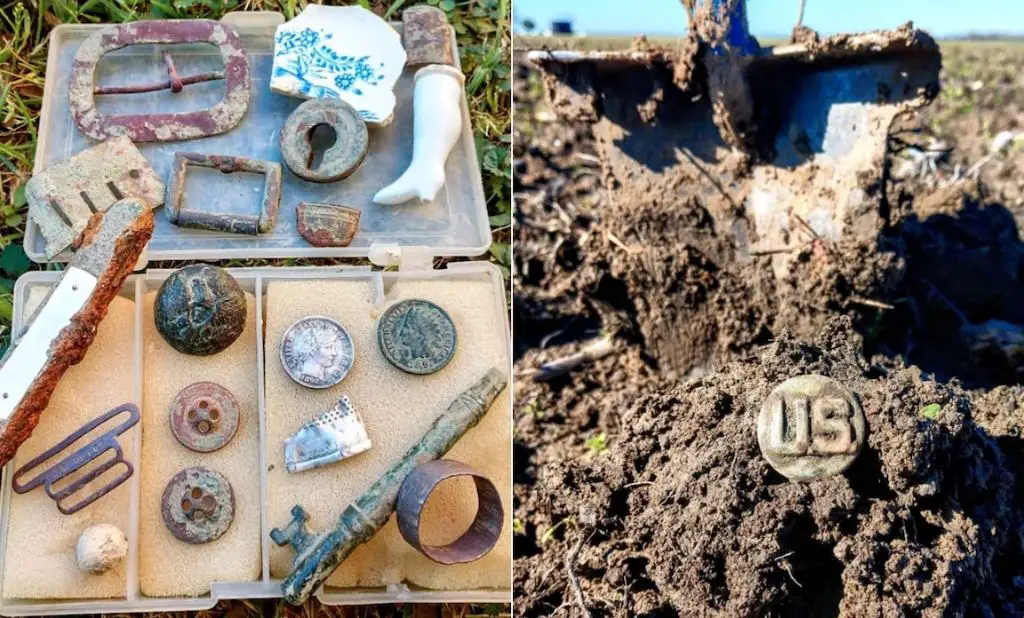Where Can I Find Pottery Shards?
Pottery shards, also known as potsherds, are fragments of pottery vessels that have broken into pieces. They are significant archaeological artifacts that provide insights into past cultures and civilizations. Pottery was an important invention in many ancient societies dating back over 20,000 years, allowing people to store, transport, and prepare food in durable containers. The analyze of pottery shards found in archaeological excavations can reveal information about the pottery’s origins, age, construction methods, and purpose.
Pottery shards may be decorated or undecorated, painted or unpainted. The type of clay used, any additives, the techniques for shaping and firing the vessels, and the decorative styles all provide clues about the time period and culture the pottery originated from. Characteristics like the color, texture, thickness, and curvature of shards indicate manufacturing processes. Making inferences based on subtle differences in pottery styles found across different strata in excavation sites allows archaeologists to relatively date artifacts and archaeological layers. Hence potsherds assist in developing chronologies of occupations at excavation sites. As durable and plentiful artifacts, pottery shards are invaluable for learning about cooking practices, trade networks, social customs, artistic styles, and technologies of past societies.
Archaeological Excavation Sites
Numerous archaeological excavation sites around the world have turned up a bounty of pottery shards, providing a fascinating glimpse into ancient cultures. Some of the most famous include:
Jerusalem, Israel – Excavations in the ancient City of David near the Gihon Spring have uncovered pottery shards dating back over 2,700 years to the Iron Age. Many bear ancient Hebrew inscriptions, offering insights into Jerusalem’s rich history (source).
Pompeii, Italy – This famous archaeological site buried by the 79 CE eruption of Mount Vesuvius contains a wealth of pottery fragments that reflect daily life in the Roman Empire. Shards provide clues into foods, trade, and culture.
Cahokia, Illinois, USA – Excavations at this ancient Mississippian city reveal pottery styles spreading across Eastern North America 1,000 years ago. Intricate pottery shards shed light on native arts and spirituality.
Machu Picchu, Peru – Terraced archaeological sites in the Andes yield Inca pottery pieces, like aryballo vessels and keros. Shards exhibit the empire’s artistic mastery of ceramics.
Ban Chiang, Thailand – Dating back over 5,000 years, this UNESCO site contains monumental quantities of pottery sherds marking Southeast Asia’s transition to agricultural societies and early Bronze Age cultures.
Museums
Major museum collections are an excellent place to view and study pottery shards from ancient civilizations around the world. The Alfred Ceramic Art Museum at Alfred University houses nearly 8,000 ceramic objects including pottery shards recovered from ancient sites. Their extensive collection allows visitors to trace the history and evolution of ceramic materials across cultures.
Other top museums to explore pottery collections include the Smithsonian American Art Museum‘s Renwick Gallery, the Gardiner Museum in Toronto, the Dinnerware Museum in Ann Arbor, and the Museum of Ceramics in New York. These museums acquire shards through archaeological excavations, private donations, and purchases to build comprehensive exhibits.
Visiting museum collections in person provides an immersive learning experience through direct exposure to authentic artifacts. Knowledgeable curators and interactive displays shed light on how shards contribute to our understanding of ancient societies.
Antique Shops
Antique shops and flea markets can be great places to find pottery shards from various time periods. When browsing antique stores, look for booths that specialize in antiquities, Native American artifacts, or general primitive items. Search through bins and boxes to uncover shards that may be mixed in with other objects. Some tips for finding pottery shards at antique stores and markets include:
Inspect ceramic dishes, vases, and figurines closely. Sometimes these items may have old breaks or repairs where the original shards are still present. Large antique malls often have entire sections dedicated to damaged goods and “as is” items where you may uncover pottery shards.
Check for shards being sold in small lots rather than as part of complete vessels. Dealers will sometimes sell shards they’ve found or that are left over from damaged stock items.
Talk to the dealers about your interest in pottery shards. They may be able to direct you to fellow vendors who specialize in that type of item, or pull shards from their own private collections to sell.
Search at stores known for carrying estate sale merchandise and items cleaned out of old houses. These shards may have been found at the property but not deemed valuable enough to auction as a complete piece.
Look for shards incorporated into mosaic art pieces, candles, or decorative items which you may be able to purchase just for the shards themselves.
Seek out privately owned “pickers” booths which are more likely to have small individual finds for sale rather than full antique store inventories.
Beachcombing
One of the best places to look for washed up pottery shards is along beaches and rivers where artifacts can wash up from eroding sites. According to Leapman, some great areas for beachcombing include along the Thames River in London, where centuries of habitation have left all kinds of artifacts. The changing tides and erosion from the riverbanks causes pottery shards and other objects to wash ashore, making it a prime beachcombing location.
Other ideal beachcombing spots include areas along the Chesapeake Bay, where numerous Native American sites and colonial settlements have left traces. The constant erosion of the shoreline causes artifacts like pottery shards and arrowheads to wash up regularly. Keep an eye out along beaches and rivers near known archaeological sites for your best chance of coming across ancient pottery shards.
Metal Detecting
Using a metal detector is a popular way to locate historical pottery shards on old homesteads and settlements. Though pottery itself contains no metal, metal detectors will often pick up traces of metals that were used in glazes or got embedded in the clay. According to this article, over 90% of shards recovered from 18th and 19th century homestead sites in the northeastern US contain traces of metal. The metal traces are often small flecks of iron or steel that got mixed into the clay.

Metal detectorists looking for shards should focus on areas around old foundations and trash pits. Even if a shard does not contain metal itself, it was often discarded alongside metal objects that can be detected. So metal hits can signify areas where pottery shards may be buried. Some experienced detectorists recommend listening for a distinctive higher pitched ‘snap’ sound that pottery shards often make compared to other objects like coins or nails.
Overall, a quality metal detector can be a useful tool for uncovering pottery shards on historical sites, especially when used carefully around old foundations andtrash deposits. Just don’t expect every shard itself to trigger the detector – look for other metal signs in the surrounding area. As one expert puts it, “Follow the shards to find the coins.”
Private Collections
Many collectors around the world own extensive pottery shard collections. These collectors often enjoy sharing their collections with others who appreciate ancient artifacts. Connecting with private collectors can provide opportunities to view or even purchase shards for your own collection.
Look for collector groups on social media or hobby forums that focus on archeology and ancient artifacts. Introduce yourself and express your interest in viewing or purchasing shards. Be respectful when contacting collectors, explain your passion for ancient pottery, and offer to provide references if requested.
Another option is attending antique shows, collectors expos, or archeological society events. These provide chances to network with collectors who may be interested in selling select shards from their collections. If you see something of interest, politely inquire if the shards are available for purchase.
Websites like eBay also list thousands of pottery shards from private collections up for auction. Read sellers’ profiles thoroughly, check ratings, and don’t be afraid to ask questions prior to bidding.
Connecting with the right collectors can lead to wonderful opportunities to view or purchase truly unique pottery shards for your personal collection.
Online Auctions
One of the best places to find authentic pottery shards for your collection is through online auction sites like eBay. With millions of items listed daily, you’re bound to come across shards and fragments from various periods and cultures.
When browsing online auctions, pay attention to the item description, condition, and provenance. Reputable sellers will provide details on where and when the shard was found. Higher quality pieces will often come with a certificate of authenticity from a respected appraiser.
Look through the seller’s feedback rating to get a sense of their reputation. Established sellers with 99% positive ratings or higher tend to provide a smoother transaction experience.
Once you find a shard you want, read the entire listing carefully before placing a bid. Check if the seller charges extra for shipping and handling. Make sure to factor these additional costs into your maximum bid amount.
If you win the auction, pay promptly and keep records of your transaction. When the shard arrives, inspect it carefully to ensure it matches the listing description and is in satisfactory condition before leaving positive feedback.
With some diligent searching, online auctions can be a treasure trove for unique pottery shards to grow your collection. Just be sure to do your due diligence as a buyer.
Creating Reproductions
One way to obtain replicas of pottery shards is to create them yourself out of clay. This can be a fun craft project and allows you to recreate specific styles or time periods. To make replica shards, you will need some basic pottery tools and supplies:
- Clay – Any type of clay can work, but terra cotta or earthenware clays are common for shard replicas.
- Rolling Pin – To roll out the clay into flat slabs.
- Pottery tools – Basic sculpting tools, loop tools, ribs, etc. to shape the clay.
- Acrylic paints and brushes – For painting designs after baking.
- Clear glaze – optional for finishing.
Start by rolling out the clay into thick slabs, about 1/4 inch thick. Use pottery sculpting tools to cut out shard shapes. You can cut freehand or use a template. Add lines, textures, and designs to mimic ancient styles. Let the shards dry completely before baking them according to the clay instructions. Once cooled, you can paint them with acrylics. Lightly sand any rough edges. Apply a clear glaze for a smooth finish. With some practice, you can create realistic looking pottery shard replicas with clay.
For more detailed tutorials on making replica pottery shards, check out some video demonstrations like this one: How to Make Replica Pottery Shards
Caring for Your Collection
Cleaning, organizing, and preserving shards in your personal pottery collection is key to ensuring your finds remain intact for years to come. When cleaning shards, be very gentle. Use a soft bristle brush to lightly brush away any loose dirt or debris. Avoid scrubbing or using harsh chemicals, as this can damage the pottery. According to experts on TreasureNet, you can also spray shards with a gentle 20:1 solution of oxyclean and water to lift dirt and buildup. Allow to air dry fully afterwards.
When organizing your collection, group shards that appear to be from the same vessel together. You can store them layered in acid-free tissue paper inside archival boxes. Avoid overcrowding. Write details like the location and date found on the box. Keep delicate items protected in polyethylene bags. Control temperature and humidity levels in the storage area to prevent cracking and deterioration over time. Handle with care, as ancient pottery can be extremely fragile.
With proper cleaning and storage methods, even small pottery shards can last and be enjoyed for generations. Take time to care for your archeological finds.




